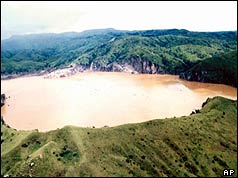German upper house rejected Carbon Capture Law

Germany’s upper house of parliament has recently rejected a controversial law on carbon capture and storage technology [CCS]. Although CCS is seen as one of the main methods of reducing greenhouse emissions, critics argue that it is too risky. √جª¬ø
The German upper house of parliament, the Bundesrat, has struck down a law for testing carbon capture and storage CCS technology following strong resistance from a number of polititicans. The test was intented to test technology until 2017, but the decision calls into doubt the construction of the 250 – megawatt testing plant by the Swedish utility giant Vattenfall in Brandenburg.
Objections to the introduction of the technology have centered on local citizens initiatives and some state governments, concerned over threats to human health.
An example often cited is a naturally occurring carbon dioxide leak that lead to the death of 1,700 people at Lake Nyos in Cameroon in 1986. Scientists concluded that high rainfall had displaced CO2 rish water at the bottom that bubbled up from the extinct volcano beneath. Eyewitnesses saw the water turn reddish brown as a heavy gas was released in a bubble that rolled in a cloud across surrounding countryside. Escaped gas which included a mixture of hydrogen and sulphur overwhelmed at least three villages.
The IEA have been investigating the potential danger from escape for a number of years. CO2 is a liquid that poses different risks from natural gas as the operating pressure is higher. Pipelines that were originally deployed for the distribution of gas are now being brought back into service, with inherent risks of using old equipment. As CO2 is dense, any escape requires teams who are trained to deal with the vapour, whereas natural gas escape results in evaporation.
The US Department of Transport introduced a pipeline and hazardous materials safety administration that controls over 2.2 million miles of pipes, often designed to transport gas and other products. Their view is that 80% of their work is in containment -ensuring that ‘what goes in the pipe should stay in the pipe’. It is felt that the main cause of accidents is equipment malfunction that is responsible for 40% of failures. Other causes include corrosion, evacuation, 3rd party damage, material and failed welds.
In Holland, the K12 gas fields complex, close to Randstad is predicted to hold 1600 millions tonnes of CO2. Carbon is extracted prior to transportation and injected back to the same reservoir that it came from. Pipeline owners have to prove they have risk maps, safe working arrangements, risk contours etc.
A 2008 study into Carbon Capture Storage technologies by Greenpeace concluded that CCS wastes energy due to loss of efficiency after the retrofitting existing plants, increased use of limestone, ammonia and freshwater in the process. The report also concluded that there is every chance that carbon dioxide will behave in ways that are totally unexpected. For example, at a pilot project in Frio, Texas, researchers were surprised when the buried CO2 dissolved large amounts of the surrounding minerals responsible for keeping it contained.
The CO2 reacted with salty water to create an acidified brine that dissolved other materials. Concerns were expressed that the brine could leak into aquifers that supply drinking and irrigation water. Other risks that have been identified include the negative impact on soil ecosystems. The report entitled ‘False Hope, Why carbon capture and storage won’t save the climate’ is available by clicking here.

Originally posted 2011-09-27 00:00:00.


